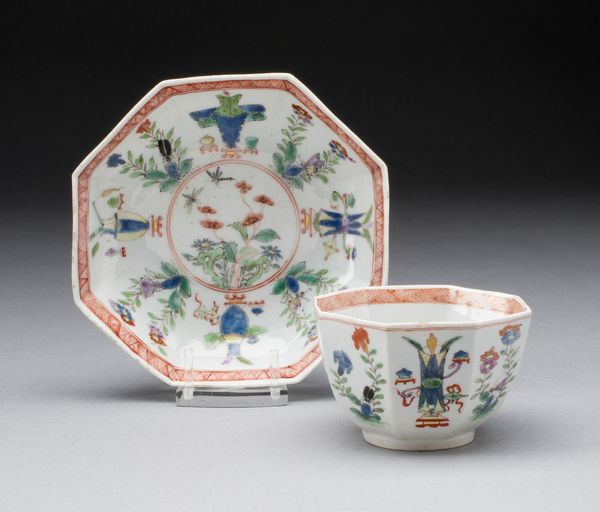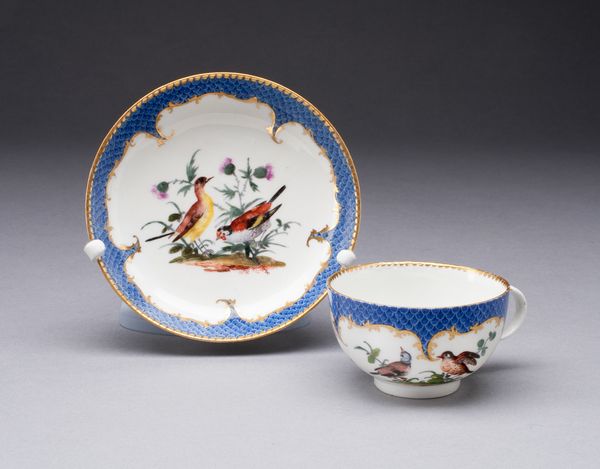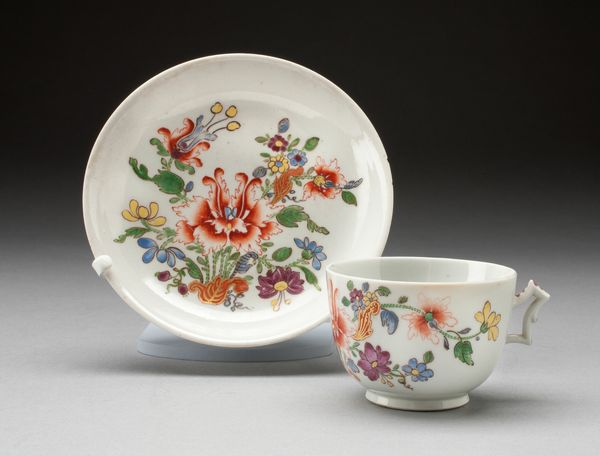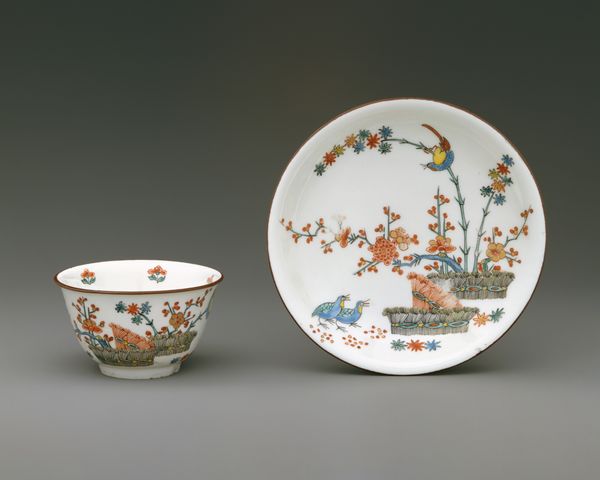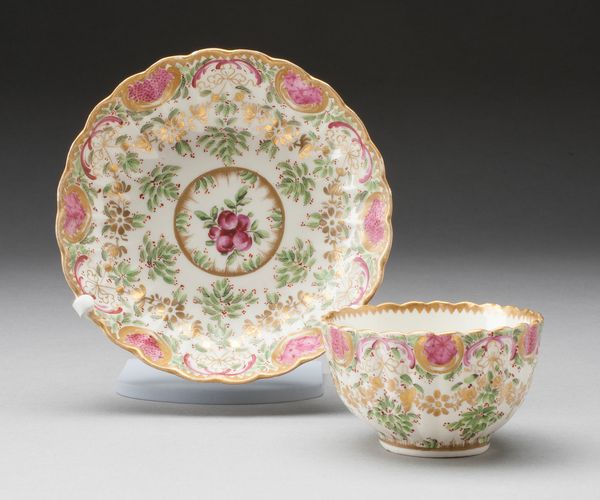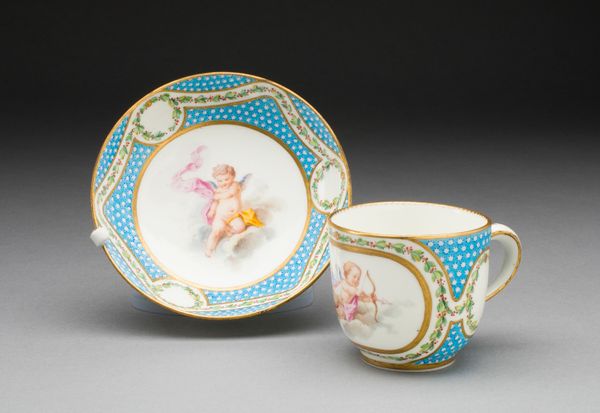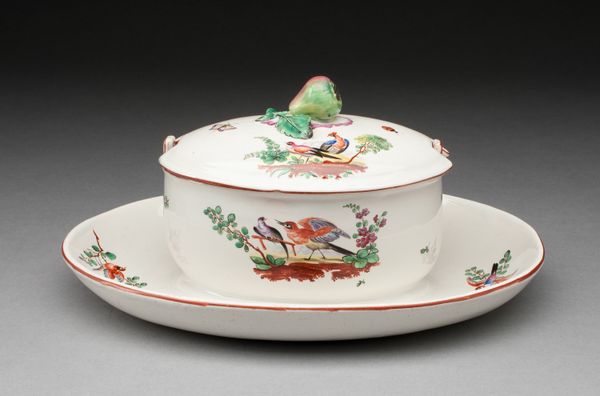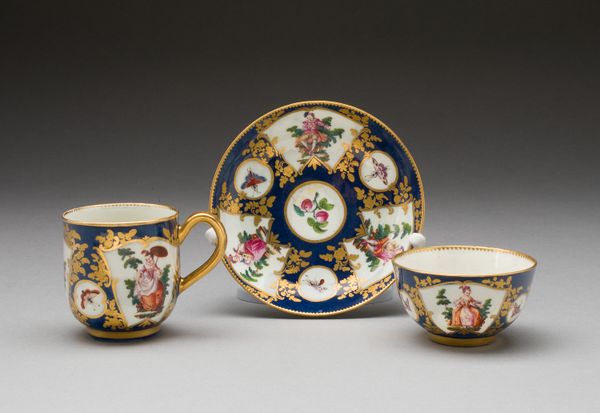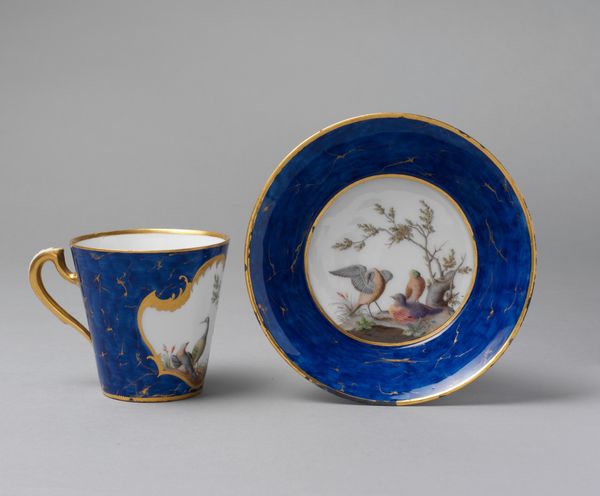
ceramic, porcelain
#
fairy-painting
#
ceramic
#
porcelain
#
ceramic
#
decorative-art
#
miniature
#
rococo
Dimensions: Cup: 6 × 7.1 cm (2 3/8 × 2 13/16 in.); Saucer: 10.8 × 13.3 cm (1 1/4 × 5 1/4 in.)
Copyright: Public Domain
Curator: Looking at this “Cup and Saucer,” made around 1760 by the Manufacture nationale de Sèvres, currently residing here at the Art Institute of Chicago, what springs to mind for you? Editor: My initial impression is that of a playful opulence—a whimsical design intended for aristocratic leisure, I presume. It’s a striking display of the Rococo style. Curator: Precisely! Notice the soft, asymmetrical curves and the pastel color palette, iconic of the period. Beyond its aesthetic appeal, the creation of this porcelain set involved highly specialized labor, from the mining of kaolin to the meticulous hand-painting. Editor: Yes, the materiality is essential here. Sèvres porcelain was a carefully guarded secret; the production, a symbol of French economic and artistic power. Examining it materialistically, the gold trim and delicate brushwork signify not only artistic skill, but also the vast resources funneled into producing luxury goods. Consider the contrast: lavish display supported by, quite probably, arduous working conditions for the artisans. Curator: Absolutely. But from a formalist perspective, the cup and saucer's interplay of line, color, and form creates a harmonious whole, doesn't it? The miniature landscape scenes, framed by these curvilinear reserves, become visual poems. Editor: They are visually appealing. Yet, what interests me is how these miniatures served to construct aristocratic identity—signifying taste, refinement, and the ability to consume luxury items. Curator: I appreciate your point about consumerism. Ultimately, its survival underscores an aesthetic ideology but is fundamentally underpinned by labor and market dynamics of 18th century France. Editor: Indeed. And I am fascinated by how such a seemingly fragile object tells the tale of industry, skill, and perhaps even social inequality in Rococo France.
Comments
No comments
Be the first to comment and join the conversation on the ultimate creative platform.

